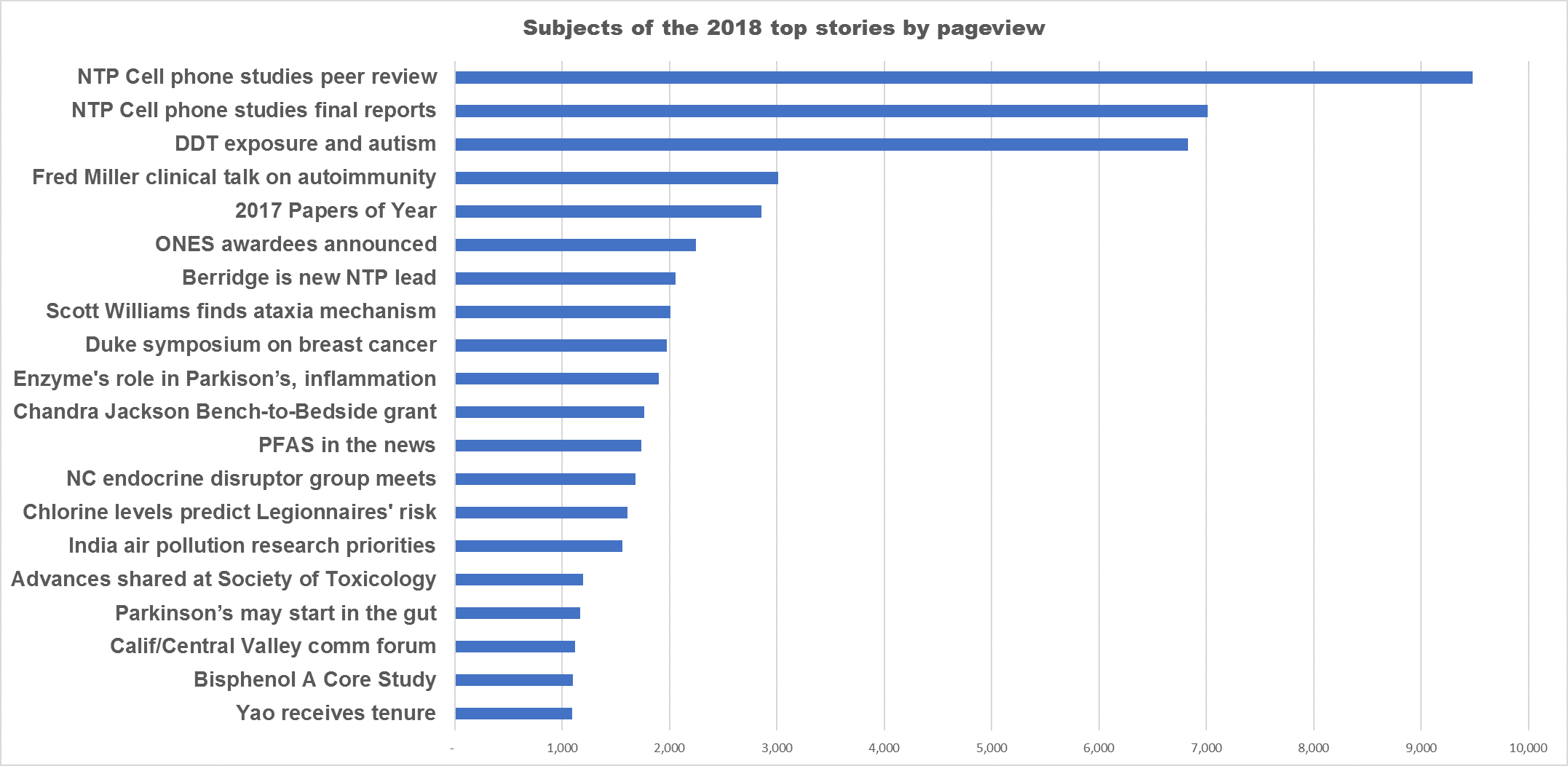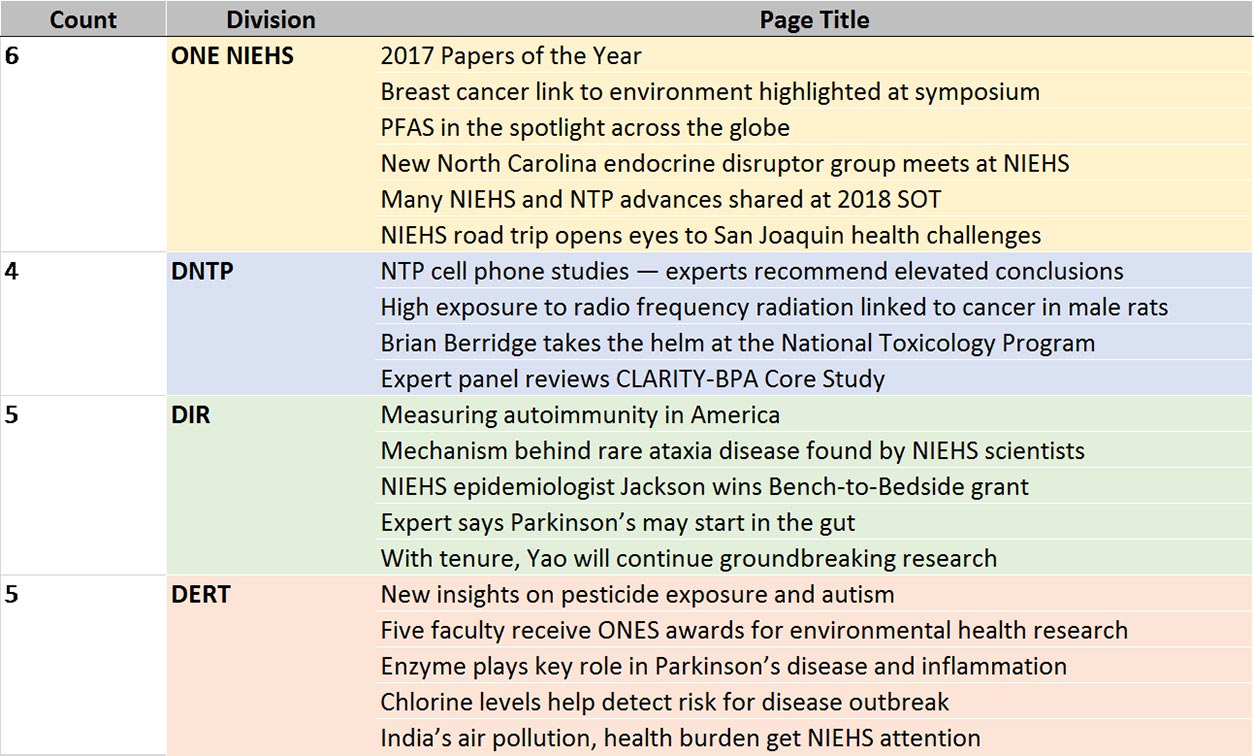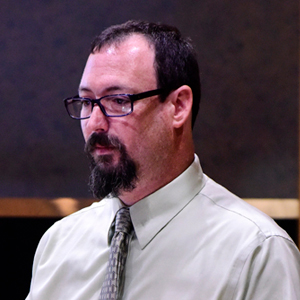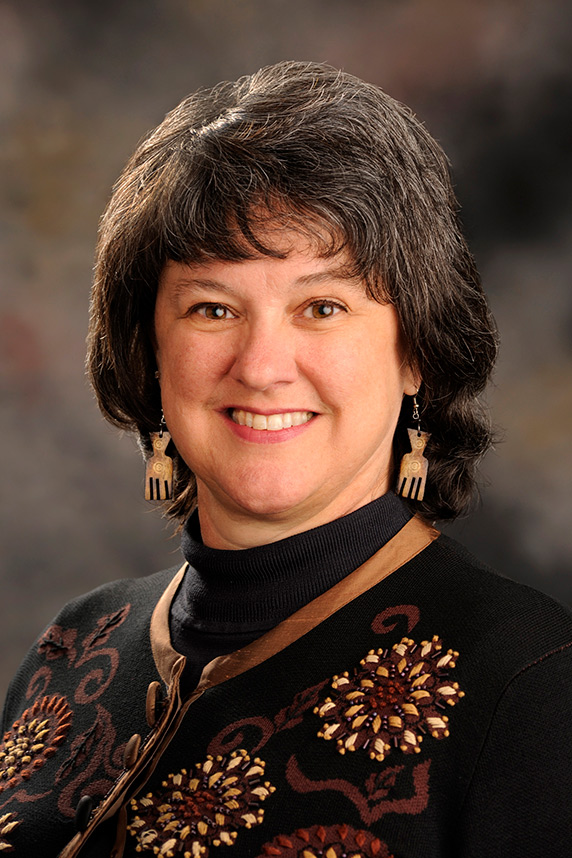 Lenox has served as editor in chief of the Environmental Factor for the past 5 years. (Photo courtesy of Steve McCaw)
Lenox has served as editor in chief of the Environmental Factor for the past 5 years. (Photo courtesy of Steve McCaw)The past year was a milestone year for the Environmental Factor. The NIEHS flagship newsletter was named the best e-newsletter in the country by the National Association of Government Communicators (NAGC). This was the second award in as many years from NAGC, which named a piece by Science Editor Robin Arnette, Ph.D., as the best web article award in 2017.
Environmental Factor staff took a look back at the top 20 stories in 2018 and found some interesting patterns.
- Coverage of the National Toxicology Program’s (NTP) draft and final studies on cell phone radio frequency radiation accounted for 29 percent of pageviews to monthly issues in 2018.
- Subjects of the top 20 stories were evenly divided among the institute’s three divisions and ONE NIEHS stories, which are the topics that crossed divisional lines.
For a monthly online publication, compiling lists like the top 20 is tricky. Our stories remain freely available and continue to attract readers in the months and years following their publication, through social media networks and internet searches.
For example, the 18th ranked story, published in August, described visits by NIEHS and NTP Director Linda Birnbaum, Ph.D., and others to several cities in California’s San Joaquin Valley, to learn about local environmental health concerns. As groups involved in environmental health around the valley shared the story among their networks — through social media, newsletters, and other means — readers continued to come to that page over the next four months of the year.
Through these means, Environmental Factor stories have what statisticians call a long tail. Most readers visit the website in the first couple of days after a new issue is published, and then readership continues at a much reduced level. Thus, one might expect a greatest hits list to be weighted toward stories published early in the year.
That is somewhat the case, as shown below. We would not be surprised if the November story on the final NTP cell phone radio frequency radiation studies appears on the 2019 top stories list.
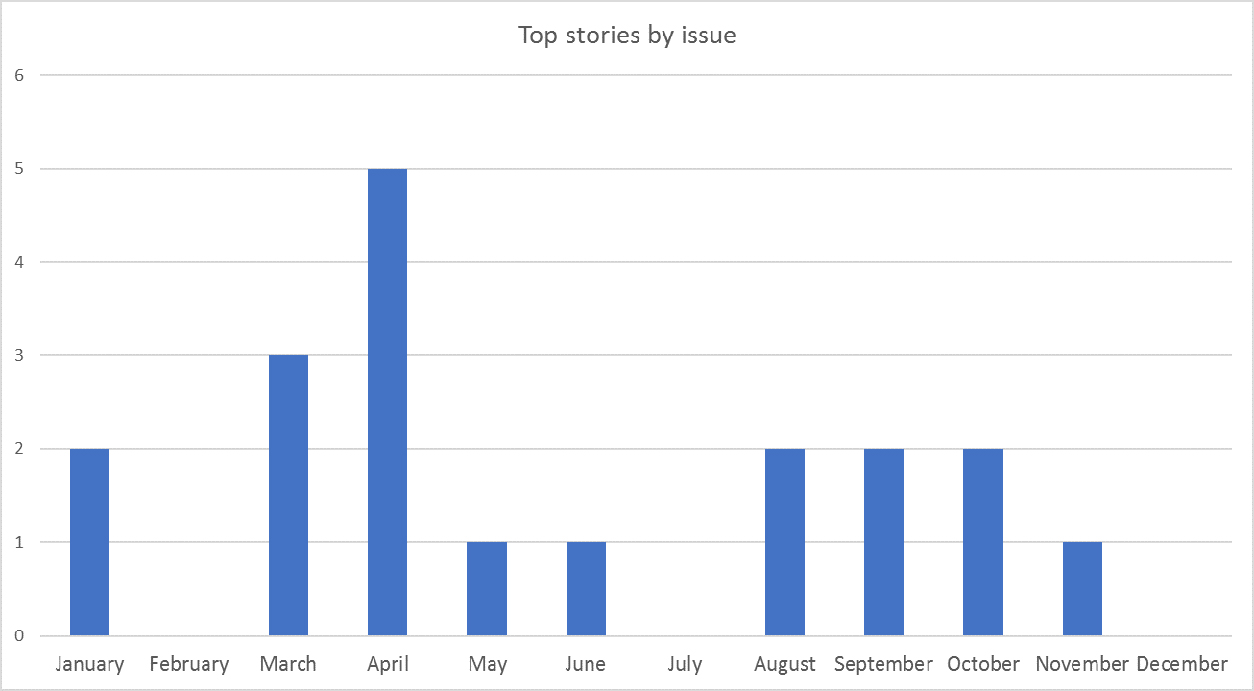 Even though stories published early in the year have more time to attract readers, several from late summer and autumn appeared in the top 20 as well.
Even though stories published early in the year have more time to attract readers, several from late summer and autumn appeared in the top 20 as well.Another way to consider the pageviews across the year is presented in the chart below, called a TreeMap, which shows both the big picture as well as how the months relate to each other. The ranking of months places the most pageviews top left, and the least at the bottom right. Months without a top 20 story are not shown. Color shading from dark to light indicates beginning of the year to end.
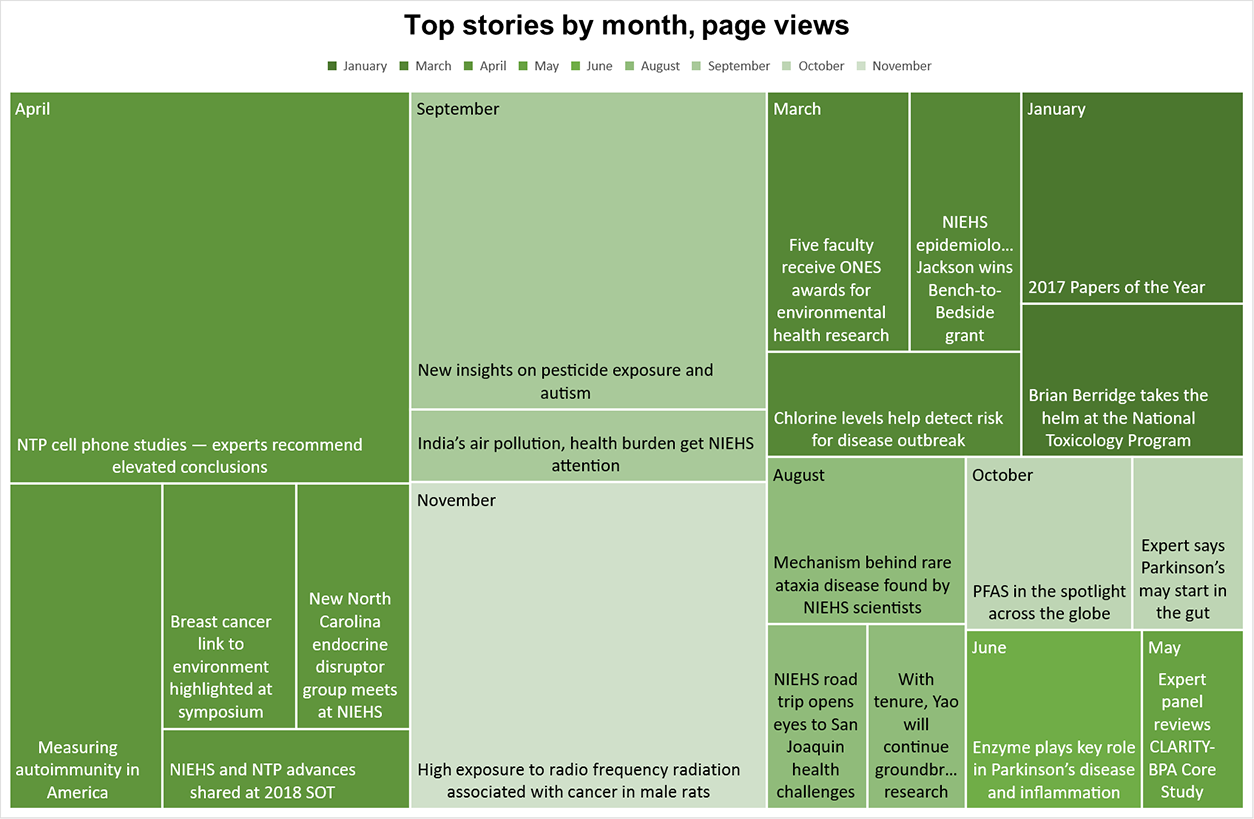 A TreeMap displays the top 20 stories in boxes sized to represent the story and issue rankings, and shaded to indicate early (darker) compared with late (lighter) in the year.
A TreeMap displays the top 20 stories in boxes sized to represent the story and issue rankings, and shaded to indicate early (darker) compared with late (lighter) in the year.Featured stories rank highly
We wondered which sections of the newsletter carry the most popular stories. The pie chart below shows that that stories featured prominently at the top of the newsletter account for half of the top-ranked articles. Unfortunately, data are not available to tell us whether they are top stories because they are featured, or whether our selection process is good at determining public interest.
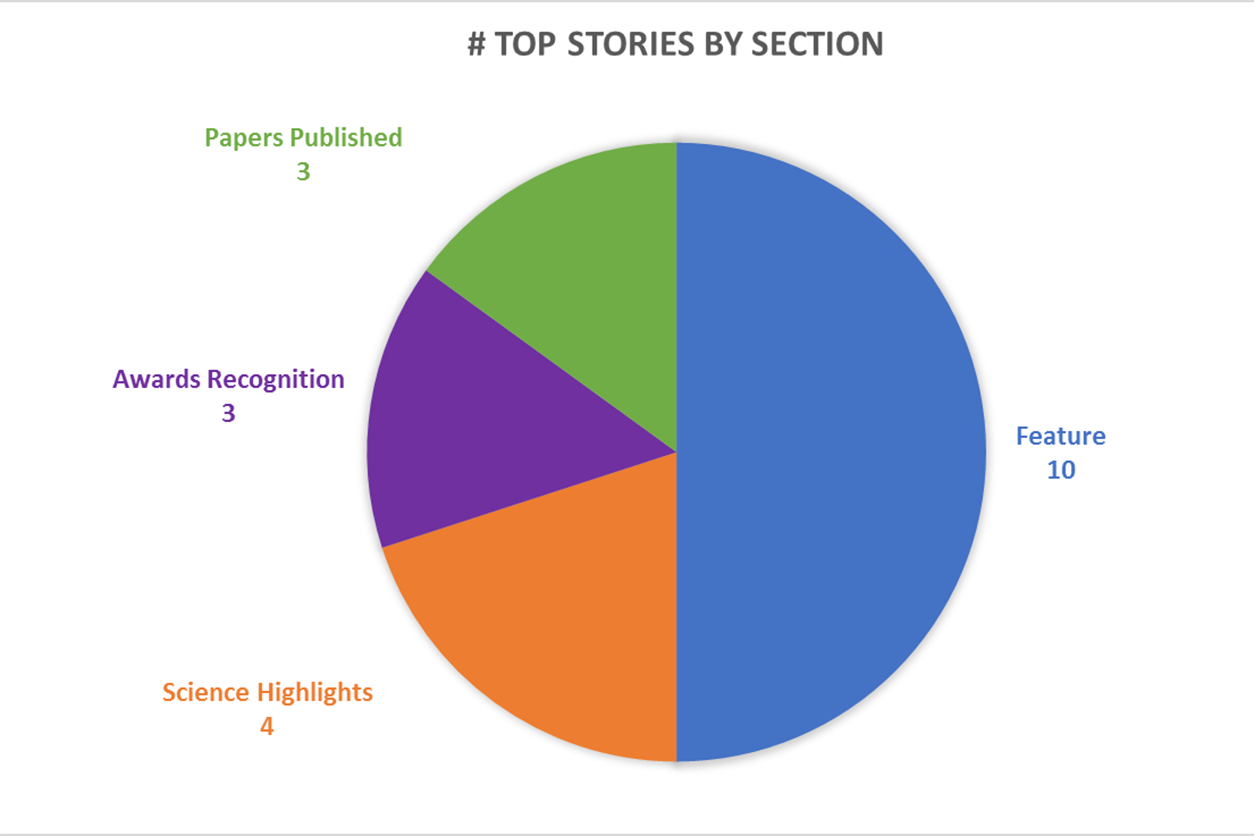 Half of the top 20 were published as feature stories. The three top sections were evenly represented among the other 10 stories.
Half of the top 20 were published as feature stories. The three top sections were evenly represented among the other 10 stories.Three of the five sections are equally represented. Science Highlights, Awards and Recognition, and Papers Published generally carry more stories in an issue than the two that are not represented — Community Impact and Beyond the Bench.
Subjects represent full range of NIEHS programs
Popular stories reflect the work of each of the institute’s three divisions, listed below, as well as activities and research that cross divisional lines, which we call ONE NIEHS. See, for example, the story on a new North Carolina group focused on endocrine disruptor research.
- The Division of Intramural Research (DIR) or in-house researchers.
- The Division of Extramural Research (DERT), which is the grants program.
- The Division of the National Toxicology Program (DNTP).
And yet, our efforts are only part of what attracts readers. Topics in the news also play a role, including cutting-edge science, like the microbiome and autoimmunity; discoveries of mechanisms involved in challenging diseases like ataxia and Parkinson’s; and cases of newly-discovered drinking water contamination, for instance, with per- and polyfluoroalkyl substances (PFAS).





